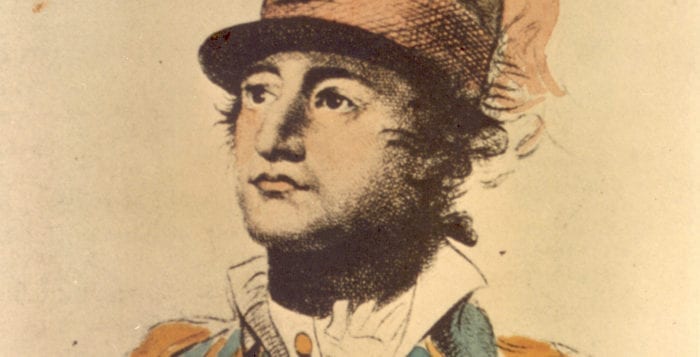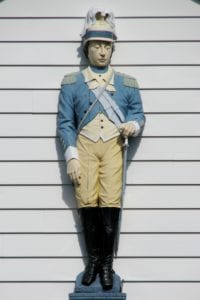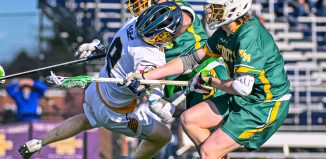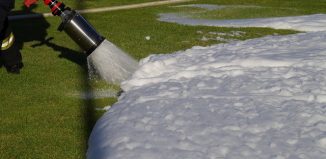Spy Benjamin Tallmadge had deep roots in Setauket

By Beverly C. Tyler
Benjamin Tallmadge was the organizer and leader of the Revolutionary War Setauket Culper Spy Ring. Tallmadge, the son of a minister of the Setauket Presbyterian Church, was born in Setauket Feb. 25, 1754.
Tallmadge grew up in Setauket, attended school here with his close friend Abraham Woodhull and, like many residents of Suffolk County, he grew to have a healthy distrust for British authorities in New York. Tallmadge, a college classmate of the Hale brothers, Enoch and Nathan, graduated from Yale in 1773 and, like Nathan Hale, taught school for a time in Connecticut.

Following the skirmishes at Concord and Lexington in Massachusetts, on May 9, 1775, Tallmadge wrote to Hale. “Brother Nathan … America, my friend, at the present period sees such times as She never saw before … everything bids fair for a change … How soon a great, flourishing, and powerful state may arise from that now stigmatized by the Name of Rebels, God only knows. The prospect however for the same seems to be great.”
Tallmadge’s commission as a Continental Army lieutenant was dated June 20, 1776, and he was assigned to Col. John Chester’s Connecticut regiment. He became a regimental adjutant July 22, 1776. His regiment was among those transferred to Brooklyn in time to take part in the Battle of Long Island Aug. 27, 1776. It was the first time Tallmadge took part in any engagement.
Tallmadge wrote a graphic account of the retreat after the battle. “On the evening of the 29th, by 10 o’clock the troops began to retire from the line in such a manner that no chasm was made in the lines … General Washington took his station at the ferry, and superintended the embarkation of the troops. It was one of the most anxious, busy nights that I ever recollect, and being the third in which hardly any of us had closed our eyes in sleep, we were all greatly fatigued … When I stepped into one of the last boats … I left my horse tied to a post at the ferry …The troops having now all safely reached New York, and the fog continuing as thick as ever, I began to think of my favorite horse, and requested leave to return and bring him off. Having obtained permission, I called for a crew of volunteers to go with me, and guiding the boat myself, I obtained my horse and got off some distance into the river before the enemy appeared in Brooklyn. As soon as they reached the ferry we were saluted merrily from their musketry, and finally by their field pieces; but we returned in safety.”
By the time Gen. George Washington was driven north from Manhattan Island in 1776, he was already working on creating a spy network that would provide intelligence on British activities in New York City and on Long Island. Deprived of heavily fortified positions to defend, and with depleted numbers of men and supplies, Washington found it necessary to enable his army to become a moving target, to strike his enemy when and where least expected, and to base his decisions on information gathered from reliable undercover sources. One of the first to operate as a spy on Long lsland was Major John Clark.
“How soon a great, flourishing, and powerful state may arise from that now stigmatized by the Name of Rebels, God only knows.”
— Benjamin Tallmadge
As 1776 came to an end and enlistments expired, Tallmadge was offered a captain’s rank in the 2nd Continental Light Dragoon Regiment commanded by Col. Elisha Sheldon. The new captain accepted his appointment with a feeling of pride, for these commands were subject to Washington’s approval.
By February of 1777, Washington’s first strategic spy network was in place with civilian intelligence expert Nathaniel Sackett conducting covert operations. In addition to his duties as a Dragoon officer, Washington had Tallmadge working with Sackett. Tallmadge, from his position near Fairfield, Connecticut, began receiving intelligence from Major John Clark and Selah Strong on Long Island. The intelligence was most likely brought to him across Long Island Sound by Caleb Brewster, a Continental Army officer, expert seaman and boyhood friend from Setauket.
In a letter to Sackett dated Feb. 25, 1777, Tallmadge wrote that he had “received Intelligence from Long Island by one John Clark that there were no troops at Setauket, but part of two Companies at Huntington and one Company at Oyster Bay . . . That the Militia of Suffolk County was ordered to Meet on the 16th Febry. In order to be drafted for the Ministerial Service but that they were determined not to serve . . . That there are but few who are not friendly to the Cause — that they had beat up four deserters in the western part of the County but that only three had enlisted.”
Clark and Strong stopped spying for Washington on Long Island about September or October 1777 when their work was discovered by Loyalist Lt. Col Richard Hewlett. So, by the time Tallmadge was ready to take over as Washington’s intelligence chief in 1778, he already had a part of the Culper Spy route established with Brewster feeding him information he was gathering from his friends, relatives and other contacts on Long Island. All that needed to be added was a connection from Manhattan to Setauket.
Beverly C. Tyler is Three Village Historical Society historian and author of books available from the society at 93 North Country Road, Setauket. For more information, call 631-751-3730 or visit www.tvhs.org.






